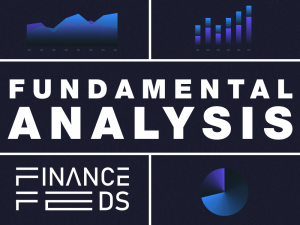What are the key factors that affect cryptocurrency trading?
With the number of cryptocurrency launches approaching one thousand, how can investors have a clear idea of which virtual currencies to trade? Here are some of the cryptocurrencies that brokers would be well advised to offer their clients if they want to stay ahead of the game, says Leverate’s Adinah Brown

Leverate’s Adinah Brown looks closely at what cryptocurrencies she considers important when brokerages are looking at offering such asset classes on their platform.
FinanceFeeds does not provide investment advice. This article does not reflect the views, opinions and the stance of FinanceFeeds in any way. FinanceFeeds does not support or in any way advise trading in any virtual currencies, cryptocurrencies and coins. FinanceFeeds does not support any involvement in initial coin offerings and related activities and is not regulated to do so.
The most significant factor for any market is liquidity. It doesn’t matter if you’re trading bonds or beans, without a good supply of buyers and sellers, that market is likely to stumble and fall.
Which altcoins should a broker offer?
That is the 64,000 dollar question. The following list of cryptocurrencies should be part of any broker’s trading offerings. Keep in mind that while these virtual currencies have sailed through market storms to become the industry’s more established benchmarks, brokers need to be conscientious about providing these cryptocurrencies to their client traders with suitable accompanying risk warnings.
Bitcoin (Symbol: BTC; Market cap: 246 trillion USD)
Bitcoin, which was launched in 2009 as the first cryptocurrency, was designed to create a secure mechanism for transferring funds on the Internet. These transactions took seconds, as opposed to the days, or even weeks that fund transfers took using traditional channels. The Bitcoin currency has an unusual feature in that there will be a limit of 21 million coins that can ever be minted, or “mined”.
Ethereum (Symbol: ETH; Market cap: 69 trillion USD)
The second contender for the cryptocurrency crown is Ethereum. This altcoin has only been in circulation since 2015, but it is certainly vying for position with Bitcoin for the number one slot. Like Bitcoin, Ethereum uses blockchain technology as its trading medium, but it has an additional feature in that it is used to pay the transaction fees and services between two parties through the use of its ‘smart contracts’. Due to its lack of mining limits, most players believe that Ethereum will replace Bitcoin as the ‘top dog’.
Bitcoin Cash (Symbol: BCH; Market cap: 48 trillion USD)
A spin-off from Bitcoin, Bitcoin Cash has been in circulation since August 2017, providing Bitcoin owners who held Bitcoins before the launch with an equal amount of Bitcoin Cash tokens. Arising out of differences of opinion between Bitcoin miners, BCH offers unlimited amounts of block capacity for holders of this spin-off currency.
Litecoin (Symbol: LTC; Market cap: 15 trillion USD)
Launched by Charles Lee in 2011, Litecoin is one of the second-tier cryptocurrencies. Its major advantage to Bitcoin is that it takes around a quarter of the time to mine, which results in quicker transaction confirmations. However, with only around 2% hold on the total cryptocurrency market, Litecoin still has a long way to go to get into that top tier.
Dash (Symbol: DSH; Market cap: 9.4 trillion USD)
Finally, Dash, which was first mined in 2014. This cryptocurrency is based on Bitcoin, but it has succeeded in reducing the time of P2P blockchain transactions. This altcoin, which was formerly called Darkcoin and XCoin has also focused on the issue of cryptocurrency privacy.









